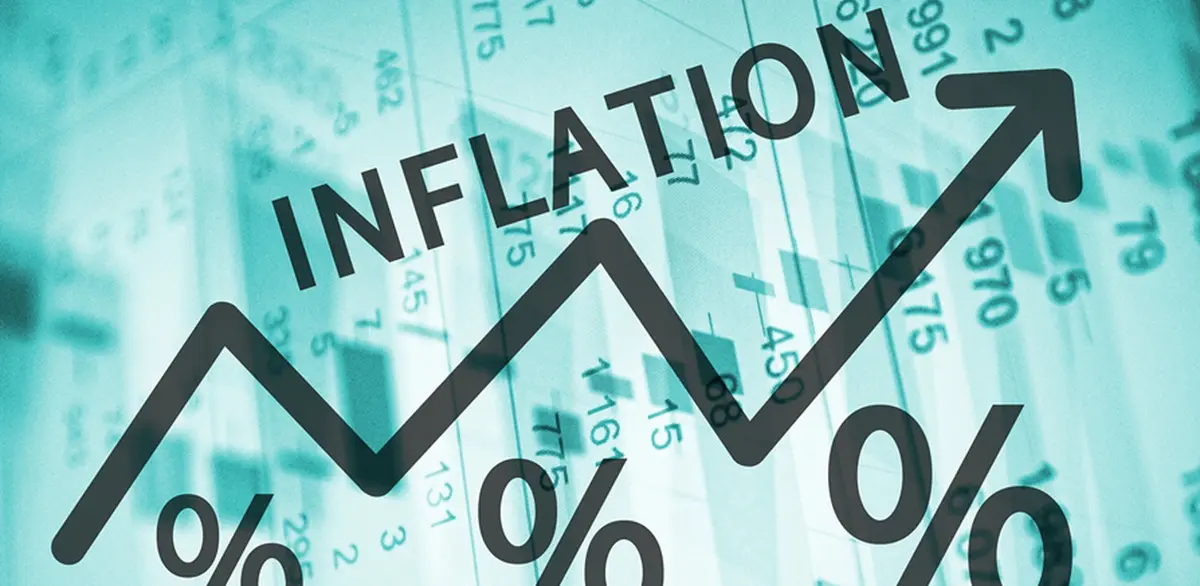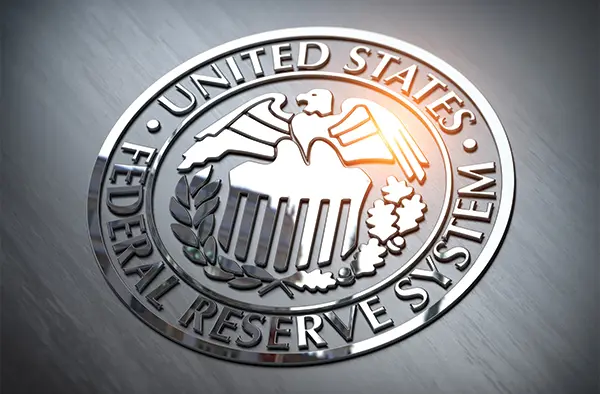Fed Chair Jerome Powell’s latest policies are aimed at stabilizing U.S. money markets. What do these changes mean for investors and the broader economy?

February 28, 2025
As the global economy faces ongoing volatility, the U.S. Federal Reserve, led by Chair Jerome Powell, has announced a series of new policies aimed at stabilizing the U.S. money markets. The policies focus on maintaining liquidity, stabilizing interest rates, and ensuring that financial institutions have access to the resources needed to weather economic uncertainties.
These policies come in response to rising inflation, fluctuating market conditions, and the ongoing impact of the COVID-pandemic. With the financial markets under pressure, the Federal Reserve is taking decisive action to maintain stability and confidence in the U.S. economy. But what do these new policies mean for money markets, and how should investors respond?
Key Aspects of the New PoliciesJerome Powell’s new policies are multifaceted, targeting several areas of concern within the U.S. financial system. Here’s an overview of the key measures introduced by the Federal Reserve:
1. Enhanced Liquidity SupportThe Federal Reserve’s primary objective is to ensure that liquidity remains available to financial institutions, particularly during times of market stress. The Fed has introduced measures to provide enhanced liquidity to banks, investment firms, and other financial institutions, ensuring that they can access capital when needed.
This enhanced liquidity support comes through the Term Auction Facility (TAF) and Repurchase Agreements (Repos). These tools enable the Fed to inject funds into the banking system, preventing short-term liquidity shortages that could lead to broader financial instability.
2. Maintaining Interest Rate StabilityInterest rates play a crucial role in the functioning of money markets. The Federal Reserve has stated that it will take steps to keep interest rates stable, preventing excessive fluctuations that could lead to market disruptions. This is achieved through its regular policy meetings and adjustments to the federal funds rate, which is the benchmark interest rate used by banks to lend to one another.
With Powell at the helm, the Federal Reserve is committed to keeping interest rates within a narrow range to avoid sharp changes that could harm investors and economic growth. These interest rate policies will likely have a direct impact on the cost of borrowing and investment yields.
3. Reducing Volatility in Short-Term Debt MarketsShort-term debt markets, such as those for Treasury bills, commercial paper, and repurchase agreements, have seen increased volatility in recent years. To address this, the Federal Reserve is focused on stabilizing these markets to reduce the risk of sudden price fluctuations. This involves both direct intervention in the debt markets and efforts to improve transparency in short-term lending.
By stabilizing these markets, the Fed aims to improve confidence in the financial system and ensure that businesses and governments can continue to access the short-term funding they need to operate smoothly.
4. Strengthening Oversight and Regulation of Money Market FundsMoney market funds (MMFs) are essential to the functioning of the U.S. financial system, as they provide a place for investors to park their cash while earning a small return. However, during periods of financial stress, MMFs can be vulnerable to runs, which could exacerbate market instability.
To mitigate this risk, Powell’s policies include stronger oversight and regulation of MMFs. The Federal Reserve has introduced measures that require MMFs to maintain higher liquidity levels and implement better risk management practices to safeguard against sudden withdrawals. These changes are intended to ensure that money market funds remain a safe and stable investment option during times of economic uncertainty.
5. Quantitative Easing and Asset PurchasesAnother key aspect of the Fed’s new policies is the use of quantitative easing (QE). Under QE, the Federal Reserve purchases government bonds and other securities to inject money into the economy. These purchases increase the supply of money in the financial system and help to lower long-term interest rates.
Quantitative easing has been a central tool used by the Fed in recent years to stimulate economic growth and prevent deflation. Powell’s policies continue to use QE as a means of supporting the broader economy while maintaining stability in the money markets.
Implications for U.S. Money MarketsThe new policies introduced by the Federal Reserve are likely to have several significant implications for U.S. money markets:
1. Increased Stability and ConfidenceBy implementing these policies, the Federal Reserve aims to increase stability in the money markets and reduce the risk of sudden disruptions. These actions will likely increase investor confidence, as the Fed’s commitment to liquidity support and interest rate stability provides reassurance during times of uncertainty.
This confidence boost could have a positive effect on the broader economy, encouraging businesses to invest, consumers to spend, and financial institutions to lend more freely.
2. Lower Borrowing CostsWith interest rates remaining stable and enhanced liquidity support available, borrowing costs for businesses and individuals are likely to remain low. This is particularly important for companies that rely on short-term financing to manage their operations. The Fed’s policies could also benefit individuals by keeping mortgage rates, auto loan rates, and credit card interest rates relatively low.
For investors, lower borrowing costs could lead to increased demand for assets, boosting stock prices and improving the overall investment climate.
3. Greater Transparency and Market AccessThe Federal Reserve’s emphasis on improving transparency in the short-term debt markets and strengthening oversight of money market funds could lead to greater market access for investors. As money market funds become more stable and better regulated, investors may feel more comfortable allocating their capital to these funds, knowing that their investments are protected against the risk of sudden withdrawals.
This increased market access could lead to a greater flow of capital into the financial system, supporting economic growth and stability.
4. Potential Impact on Investment StrategiesFor investors, the Fed’s policies provide both opportunities and challenges. On the one hand, stable interest rates and liquidity support may make it easier to invest in short-term assets like Treasury bills and money market funds. On the other hand, the continued use of quantitative easing and low interest rates could reduce the returns on these investments, prompting investors to look for higher-yielding opportunities in other asset classes, such as equities or real estate.
Overall, investors will need to carefully assess their strategies to take advantage of the Fed’s policies while managing the risks associated with prolonged low interest rates.
How Investors Should RespondIn light of these new policies, here are some steps investors can take to adjust their strategies:
Diversify Your Portfolio: Given the continued low interest rate environment and the Fed’s focus on liquidity, diversifying into different asset classes, including stocks, bonds, and real estate, can help mitigate risk and improve returns.
Consider Long-Term Investments: While short-term debt markets may benefit from the Fed’s actions, long-term investments such as equities may offer better returns in the current environment. Look for sectors that are likely to benefit from economic growth, such as technology and renewable energy.
Monitor Fed Policy Announcements: As Powell’s policies evolve, it’s important for investors to stay updated on any changes to the Federal Reserve’s approach. Regularly review the Fed’s statements and policy changes to adjust your investment strategy accordingly.
Explore International Opportunities: With the U.S. Federal Reserve’s actions influencing global money markets, investors may also consider diversifying internationally to take advantage of different interest rate environments and economic conditions.

The role of U.S. investment policies in ensuring financial security and market resilience
U.S. investment policies play a crucial role in shaping financial stability by influencing capital markets, interest rates, and economic growth. Regulatory frameworks and government interventions determine risk levels, investor confidence, and long-term economic sustainability

Understanding the impact of interest rate changes on investment decision-making
Interest rate changes have a significant influence on investment strategies. Whether through the stock market, bonds, or real estate, shifts in rates affect asset prices, investor behavior, and portfolio diversification. Understanding these dynamics is essential for making informed, profitable investment decisions

Understanding how inflation trends influence U.S. investment strategies
Inflation trends play a critical role in shaping U.S. investment policies. From adjusting interest rates to influencing asset classes like bonds, equities, and real estate, inflation trends affect economic decisions across the country. Investors must stay informed about inflation to navigate investment policies effectively and protect their portfolios

Exploring the impact of government spending on market trends and investor behavior
Government spending plays a pivotal role in shaping investment markets. From fiscal stimulus packages to infrastructure investments, the allocation of government funds can drive market movements and influence investor sentiment. This article delves into the ways government spending impacts various sectors and markets, offering insights for investors

An in-depth look at the changes to capital gains tax laws and what investors should expect in 2025
As 2025 approaches, changes in capital gains tax laws could impact investment strategies for individuals and institutions. This article explores the key updates to tax policies and offers insights into how these changes may affect your investment portfolio

Understanding how Federal Reserve decisions impact investment trends and economic stability
The Federal Reserve plays a crucial role in shaping investment growth by adjusting interest rates, regulating money supply, and influencing market liquidity. Its policies determine the cost of borrowing, stock market trends, and overall economic expansion, making it a key driver in investment decision-making

An exploration of the impact of U.S. economic policies on investment strategies and trends
With shifting U.S. economic policies, investors are adjusting their strategies to respond to new market dynamics. This article explores the key policy changes and their influence on investment decisions

Understanding how tax policies shape investment strategies and financial growth
Tax regulations play a crucial role in determining investment returns by affecting capital gains, dividends, and corporate profits. Changes in tax laws influence investor behavior, asset allocation, and long-term financial planning, making it essential to stay informed about evolving policies

Learn how U.S. monetary policies influence investment decisions and market trends
U.S. monetary policies, driven by the Federal Reserve, play a significant role in shaping investment opportunities. Understanding interest rates, inflation control, and liquidity measures helps investors make informed decisions and optimize portfolio returns in varying economic climates
The Atlantic Daily
Get our guide to the day’s biggest news and ideas, delivered to your inbox every weekday and Sunday mornings. See more newsletters
.webp)
Ideas That Matter
Subscribe and support more than 160 years of independent journalism.
Subscribe